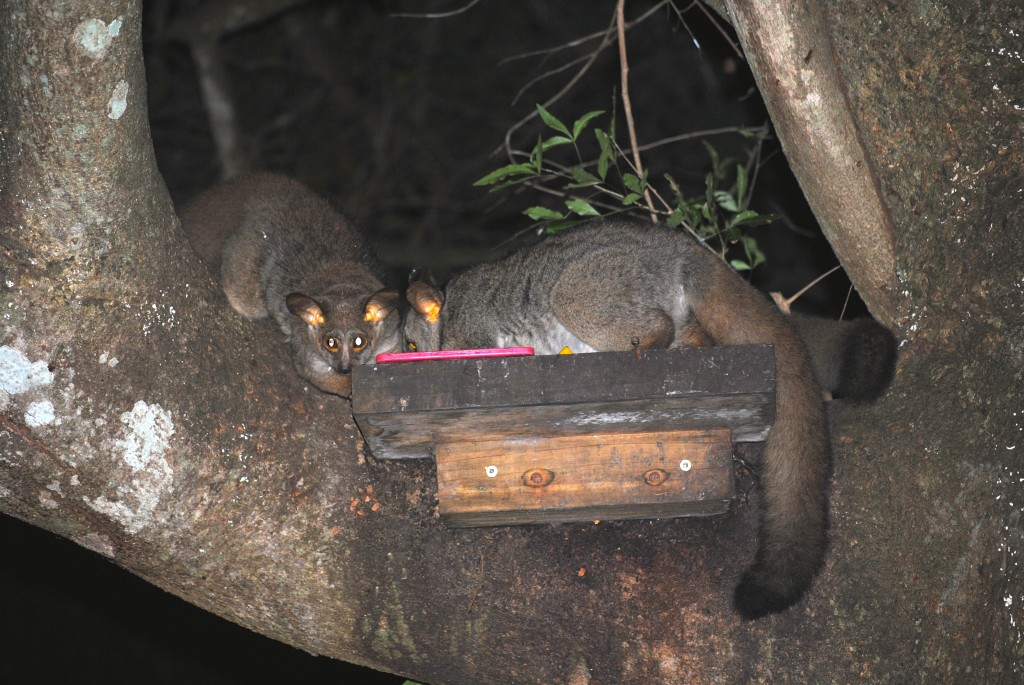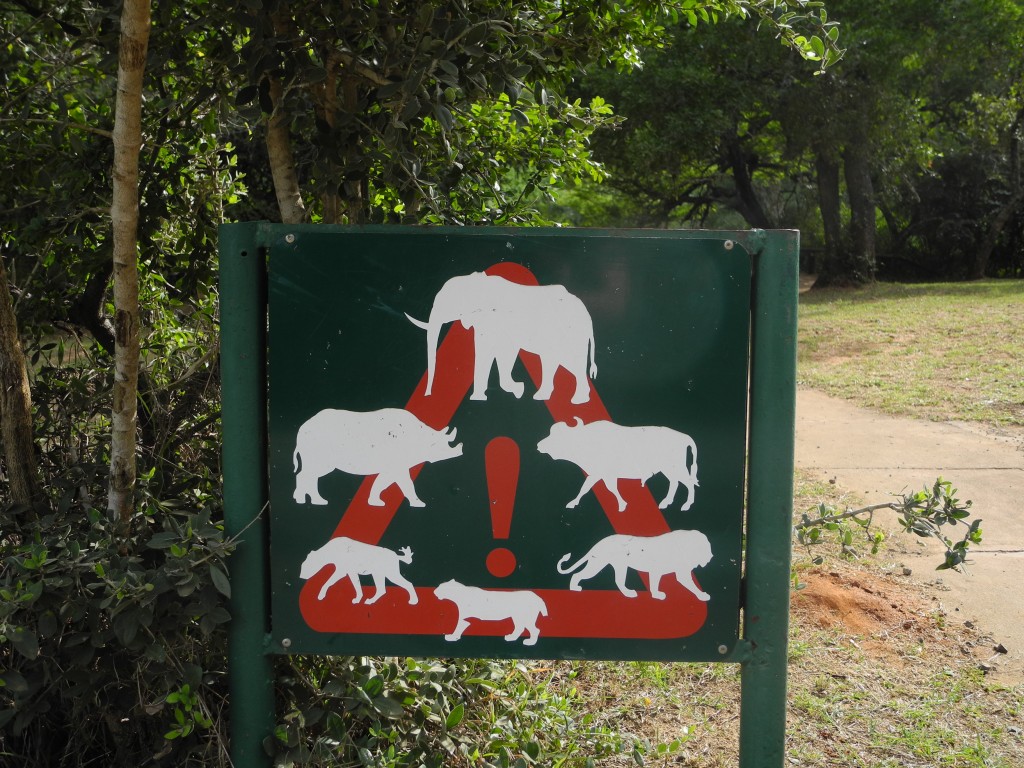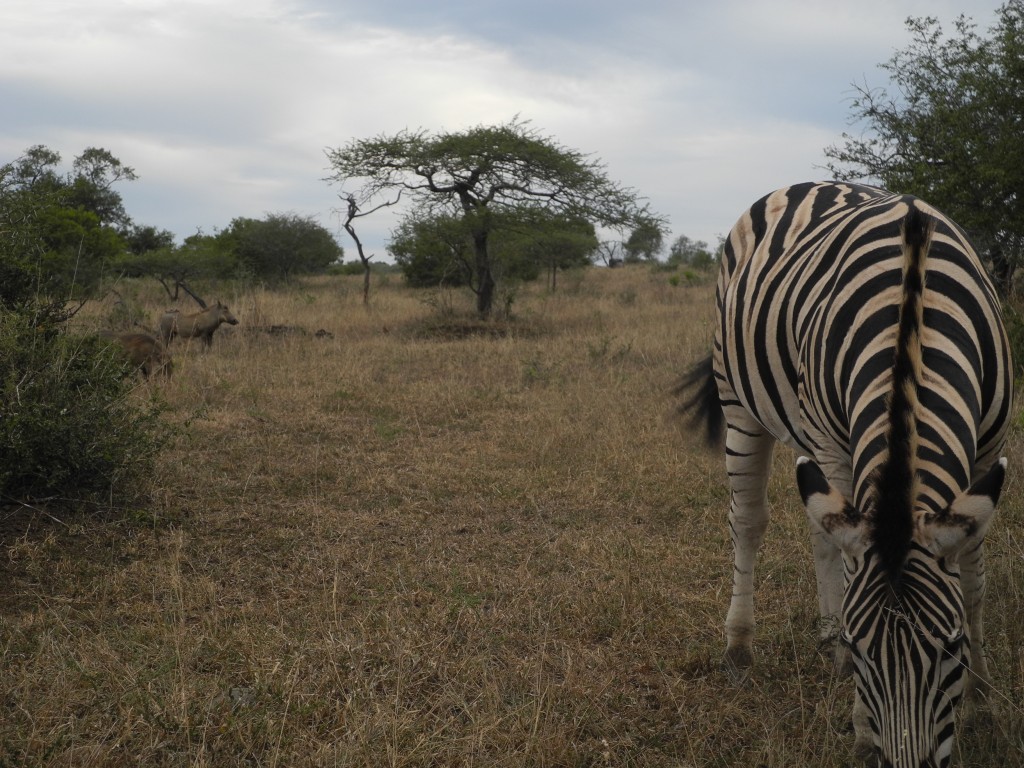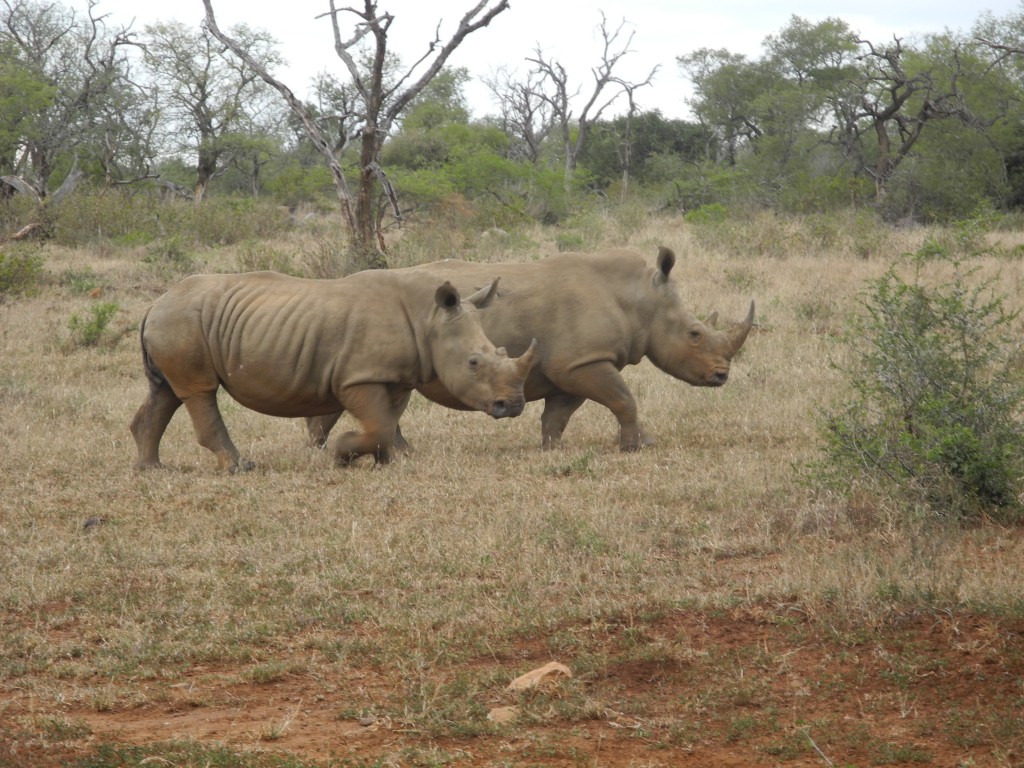Hluhluwe-Imfolozi1 Park is the oldest proclaimed national park in Africa, and is widely regarded as one of the best. Although it is much smaller than Kruger, covering only 960 square kilometers, and, strangely, a public road runs through it, 2 the park is allegedly a great spot to sight animals – it is also much less crowded than Kruger, and set in an arguably more beautiful setting, which covers large hills and river valleys. Everything we had read about the place sounded awesome, and we couldn’t wait to visit.
We arrived from Swaziland late on Sunday afternoon, only to learn at the entrance gate that there were no accommodation vacancies at Hilltop Camp in the park. Having naively hoped to simply turn up and be able to stay in the park, we hadn’t arranged alternate accommodation (a fact which, once revealed to the park staff at the entrance gate, elicited a few raised eyebrows), and so we decided to cut our losses and return to the park first thing in the morning.
We backtracked into Hluhluwe village and found a room at the Bushbaby Lodge & Camping. True to its name, bushbabies2 lived in the trees surrounding the lodge, and the owner of the lodge sets out a plate of bananas for the bushbabies each night.

Our amazing luck at Kruger might have spoiled us just a bit. We arrived at Hluhluwe-Imfolozi just after six o’clock in the morning, primed to see animals. We entered at the Memorial Gate on the Hluhluwe side, but quickly found ourselves stuck on a potholed tarred road with a bunch of safari vehicles. The safari vehicles, which were much higher off the ground than our rented Toyota Corolla, kept stopping, their occupants looking far off into the distance with binoculars, but we could never see what they saw – or if they saw anything at all.

We veered onto a dirt road and were reward with a glimpse of some far-off buffalo shuffling about in high grass.

Soon after, we saw some blobs on a hill in the distance. “I think I see something,” I told Marc, “but they might just be rocks.” We peered and squinted and used our zoom lenses and finally discerned there was a herd of elephants grazing on the hillside. Amazing, but we were going to go blind trying to catch a better glimpse of them.

Finally, we spotted what Hluhluwe-Imfolozi Park is famous for: rhinoceroses. Twenty percent of the world’s population of rhinoceroses can be found at the park, and the park is often credited with ensuring that the white rhinoceros was removed from the endangered list.

We took a break at the Centenary Centre, where, after a quick snack and cooldrink,4 we toured an exhibit on the history and methodologies of capturing wild animals. Because the rhinoceros breeding program at Hluhluwe-Imfolozi was so successful, the park began capturing its rhinos and relocating them to other parts of the world, helping to remove the white rhino from the endangered list. The exhibit also showed how other animals, like impalas, giraffes, and hippos, are captured and transferred to new homes, and explained how the animals would be kept in bomas to help them acclimate to their new environments. Some parts sounded horrible – for example, the white rhinos would sometimes refuse to eat when they were relocated – but the exhibit was quick to clarify that the animals were attended to and monitored to ensure they were safe, and that animals were captured in family groups when possible. I particularly enjoyed the dioramas depicting the fearsome hippos being captured (and I’m kicking myself for not taking photos of them).
After a disappointing drive to the main camp on the Imfolozi side, where we discovered there was no lunch available (the blow being softened by the sight of some warthogs frolicking on the playground), we drove thirty minutes back to the Centenary Centre and returned to the snack bar to get sandwiches – in continuing with the game meat trend while visiting South African national parks, Marc had an ostrich pita.

Over lunch, we encountered another couple that was also not having much luck spotting the animals. (They hadn’t had much luck at Kruger, either; we didn’t brag about our amazing trip.) They pointed us in the direction of a loop in the far western part of the park they had heard was good for spotting lions, and we set out in that direction.
It was a good thing we took their advice. We didn’t see any lions, but the loop was filthy with animals. We saw so many rhinos: big rhinos built like tanks, rhinos with sabre-like horns, small baby rhinos. (Our only disappointment was that we only saw white rhinos, not any of the elusive black rhinoceroses.) We also saw elephants, zebras, wildebeests, and giraffes. Aha, we thought, this is where they’ve been hiding all the animals.






We left the park happy people.
Where We Stayed
☆ Bushbaby Lodge & Camping, Hluhluwe, ZA. Four goats. We stayed here the night before we visited Hluhluwe-Imfolozi Park, which is only a quick drive away. We stayed in a hut with communal bathrooms (pricier huts had en suite bathrooms, but the communal bathrooms were clean and not far from our room). There was a communal kitchen, but we ordered the prix fixe dinner and enjoyed spicy butternut squash soup, a mountain of cheesy pasta with chicken and vegetables, and poached guava with vanilla ice cream. The obvious highlight of the stay was the bushbaby feeding.
1 Our guidebook counsels that this should “pronounced something like ‘shal-shloo-wee-oom-fa-low-zee.’”
2 The park originally was two separate reserves: Hluhluwe at the northern end, and Imfolozi at the southern end. R618 runs through the middle.
3 Don’t know what a bushbaby is? Don’t worry; neither did I. Wikipedia to the rescue!
4 “Cooldrink” is South African slang that generically refers to a soda.



Awesome! Glad you persevered and found the animals!
“Filthy with animals.” I love it. I also love the name bushbaby.
Also, when I clicked on the Bushbaby Lodge & Camping link, I also got a Christian Mingle pop-up. My work computer wants me to find love.
Oh and I really enjoyed that wiki referred to the bushbabies as “little night monkeys.” Ha.